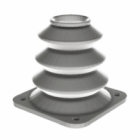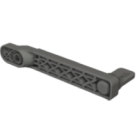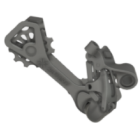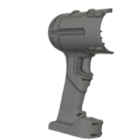Software & tools for 3D printing
Choosing the right 3D printing technology isn’t just about picking the most advanced machine — it’s about aligning your goals with the strengths of each method. Whether you’re aiming for rapid prototypes, end-use parts, or highly detailed visual models, the technology you choose will impact surface finish, durability, precision, and cost. This section breaks down the differences between leading 3D printing processes to help you make an informed, application-driven decision. Understanding the capabilities and limitations of each method is the first step to printing smarter — not just faster.
Yes, you’ll need 3D modeling software to create or edit designs and slicing software to prepare the file for printing. Most printers also come with dedicated software tailored to their workflow.
It depends on your skill level and goals. Beginners often start with TinkerCAD or Fusion 360, while professionals use SolidWorks, Rhino, or Siemens NX. For SLS, software with good mesh repair and part nesting features is essential.
You need CAD software to design the model and slicing software (like Cura or PrusaSlicer) to convert it into printer-ready instructions. Some setups also include firmware and remote management tools.
Slicing software converts a 3D model into thin layers and generates the G-code that the printer uses to build the object. It also allows you to adjust key parameters like layer height, infill density, print speed, and support generation. It’s a crucial step that directly affects print quality and duration.
To begin 3D printing, you’ll need a CAD program to design your model and a slicer to prepare it for printing. CAD tools include Fusion 360, TinkerCAD, or SolidWorks, while slicers like Cura, PrusaSlicer, or Lychee turn your design into G-code. Some printers also require dedicated software for control and firmware updates.
Ultimaker Cura is one of the most user-friendly slicers and ideal for beginners. It offers preset profiles for many printers, an intuitive interface, and a wide library of materials. PrusaSlicer is another good option, especially if you use a Prusa machine or want more advanced tuning over time.
Yes, entry-level tools like TinkerCAD or browser-based apps like SketchUp offer simple interfaces for designing basic 3D shapes. These platforms are great for educational use, hobbyists, or those new to 3D modeling. As your needs grow, you can transition to more powerful CAD solutions.
The most common formats are STL, OBJ, and 3MF. STL is the standard for geometry-only data, OBJ supports textures and colors, while 3MF retains full metadata like units, materials, and slicing settings. Always check compatibility with your printer and slicer.
The most common file used for 3D printing is STL, but 3MF and OBJ are also widely supported. STL files store geometry as a mesh of triangles, without color or material data. Some modern formats like 3MF support more metadata and better fidelity. The choice depends on your printer and software, but STL remains the industry standard.
STL files are simple, lightweight, and compatible with nearly all slicing software and printers. They describe 3D geometry as a surface mesh, which is easy to process and visualize. Their popularity is due to wide adoption and universal support in the 3D printing ecosystem. Despite limitations in precision and metadata, they’re still the go-to format for most workflows.
To prepare an STL file, export your 3D model from CAD software in a watertight, manifold format. Make sure the model is scaled correctly and oriented properly for printing. Check for non-manifold edges, flipped normals, and gaps using a mesh repair tool. Slicing software will convert the STL into printable instructions, but a clean file is essential for a successful print.
Finding the right balance between quality and speed involves tuning parameters like layer height, wall thickness, and infill. Most slicers offer draft, standard, and high-quality presets. Advanced users can manually adjust retraction, temperature, and print speed to suit their model and material.
Yes, software like OctoPrint, Repetier-Server, or professional suites like UltiMaker Digital Factory allow you to manage multiple printers remotely. They offer print monitoring, job queuing, and maintenance scheduling — ideal for print farms or educational labs.
Resin printing requires slicers designed for light-based technologies, such as ChiTuBox, Lychee Slicer, or PreForm (for Formlabs). These tools manage layer exposure times, supports, and orientation — critical for successful SLA/DLP printing. Unlike FDM slicers, they also generate hollowing and drain hole features.
Yes, some advanced slicing tools offer print simulations to visualize how your part will be built layer by layer. This helps detect potential failures like poor adhesion, warping, or support issues before wasting time and material. Simulation features also allow users to preview estimated print time, layer paths, and nozzle movements. It’s an essential step for ensuring successful, high-quality prints — especially in complex or high-value jobs.
Explore also
- 3D printing basics explained
- Choosing the right 3D printing technology
- 3D printing materials guide
- Costs, time & practical considerations
- 3D printing market & capabilities
Related categories













